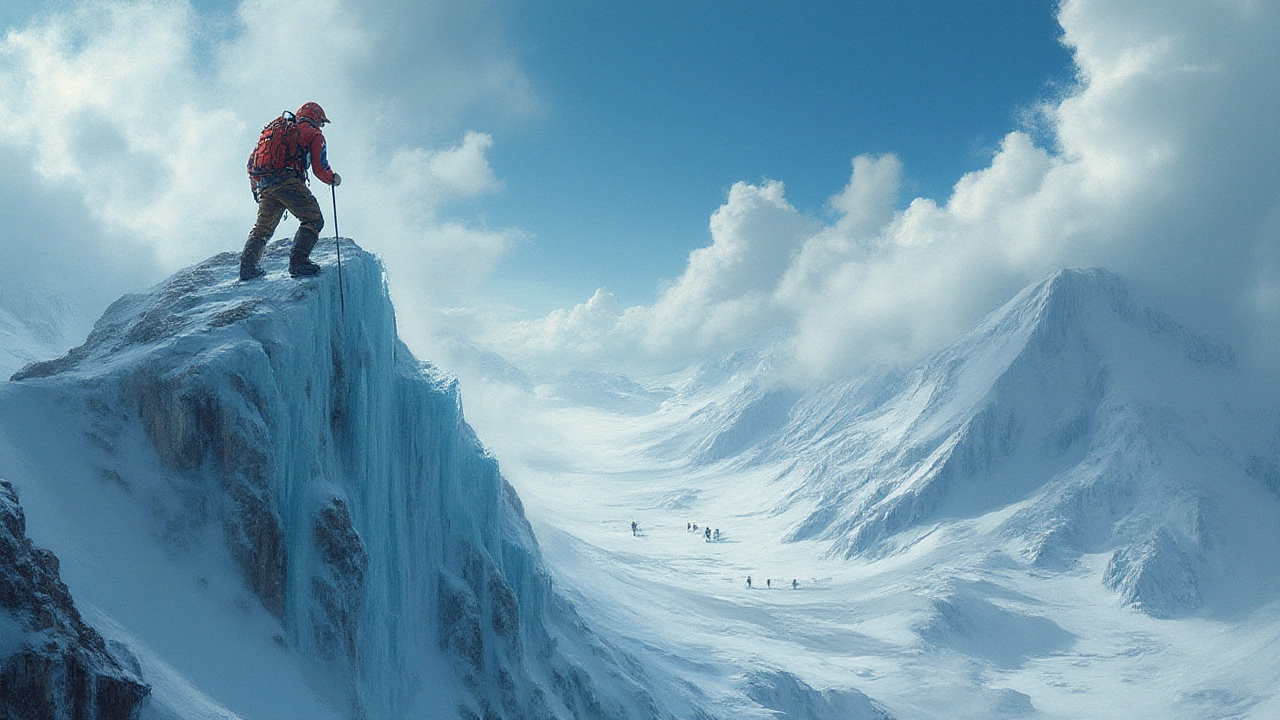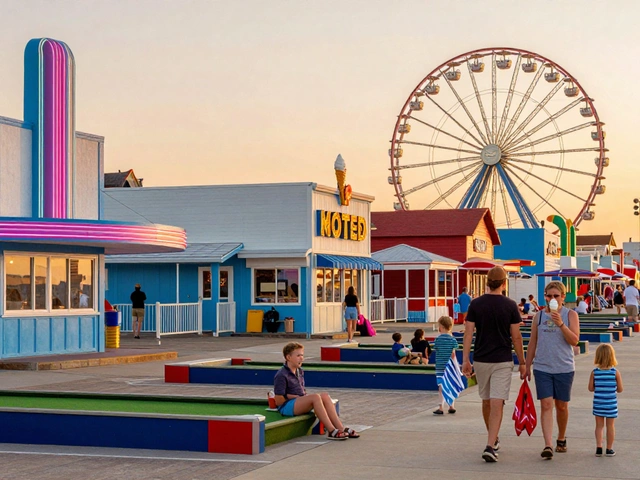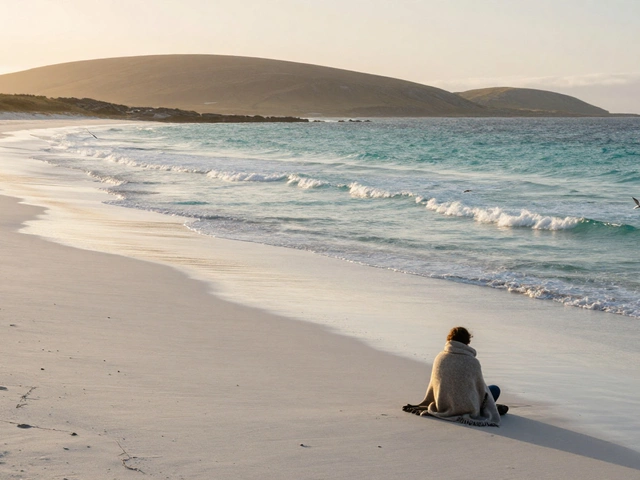Every traveler knows that feeling—the urge to chase something wild, break out of routine, maybe even push your luck a little. It’s not about sandy beaches or luxury spas, but finding a spot where adrenaline comes standard, and memories don’t fade. Want to know the truth? There isn’t just one most adventurous spot on the planet, but there is a place that constantly draws risk-takers, nature lovers, and untamed souls from every corner of the globe: Patagonia. This region, straddling southern Chile and Argentina, is the world’s ultimate playground for those who can’t sit still, who live for the epic and unplanned. Patagonia is raw. Wild. Unpredictable weather, jagged mountains rising up from teal lakes, wind that’ll slap the coffee right out of your mug. Still interested? Then let’s get into everything that makes it impossible to ignore.
Patagonia: Where Adventure is Born
Imagine a place where glaciers crash into turquoise waters, trailheads vanish into clouds, and the horizon always seems to hide something new. That’s Patagonia. You don’t just see nature here—you wrestle with it. This region covers about 400,000 square miles, running from the Colorado River in Argentina to the southern tip of Chile. It’s one of those rare places where the land feels untouched, nearly prehistoric in spots. The dramatic Andes carve the land apart, and much of it feels brutally isolated. You can hike Torres del Paine National Park, often called the 8th Wonder of the World. The famed "W" trek here isn’t a walk in the park; it’s a five-day journey over hanging glaciers, wind-crippled valleys, and forests where the only sound comes from your boots.
Patagonia’s weather is notorious for changing five times an hour. You can start out with sun, get pelted by rain at lunch, and step into sleet by dinner. It’s not just scenery—it’s survival. Local guides still swear by carrying four different jackets and telling stories of unprepared tourists hiking into the mountains in flip-flops (don’t be that person). Even so, the rewards are unreal—condors drifting overhead, guanacos leaping through the grass, and, if you’re lucky, pumas stalking in the dawn light. Only about two million people live in all of Patagonia, so if peace and quiet are part of your adventure, you’ll find them here in giant, windswept doses.
Glacier trekking is a real thing here. Head to Perito Moreno Glacier and you can strap on crampons, crunch across blue-white ice, and listen as it groans and splits right underneath you. There are kayaking trips where you dodge icebergs or paddle up to remote fishing villages, rivers so wild they’re only safely navigated a few months a year, and volcanic caves that call out to be explored. If you want big stories to bring back home, this is the place.
Other Bucket List Adventure Destinations
If Patagonia is the king of adventure, it still has some serious competition. Every continent seems to hide at least one corner where rules dissolve and your comfort zone takes a back seat. Here’s a quick world tour of contenders that could easily steal the crown on any given trip.
- New Zealand: From bungee jumping in Queenstown (they invented it here) to hiking the South Island’s Fiordland National Park, the Kiwis know how to get your heart racing. The Tongariro Alpine Crossing takes you among smoking craters and emerald lakes that look more fantasy than real life.
- Mongolia’s Gobi Desert: This one is less about speed, more about solitude. Here, you’ll ride horses and camels across dunes, sleep under the steppe sky, and track wild Takhi horses. Nomadic culture means you’re never far from a story, a cup of salted milk tea, or a game of sheep bone dice.
- Nepal’s Annapurna Circuit: The Himalayas have challenged climbers for decades, but trekking the Annapurna region throws you into high-altitude villages, sacred temples, and mountain passes that leave your lungs and legs burning. You’ll share the trails with yaks, monks, and fellow wanderers from every continent.
- Yosemite and the Sierra Nevada: Yosemite is famous for a reason—El Capitan draws rock climbers with a death wish, and backcountry hikers can vanish for days among pine forests and granite domes. It’s every bit as wild as Patagonia, just with a different American accent.
- Svalbard, Norway: Polar bears outnumber people here, and you can kayak through ice-strewn fjords while watching the northern lights. In summer, the sun never truly sets. Getting there isn’t easy, but remote equals unforgettable.
These places might look diverse on a map, but what ties them together is the challenge. Traveling in them means going farther than you planned, learning fast, and discovering that the line between comfortable and alive isn’t as thick as you thought. You’ll need real gear: hiking boots that won’t quit, layers for every mood swing nature throws at you, and good insurance (just in case).

Travel Tips for Surviving and Enjoying Extreme Adventure Destinations
Planning a trip to any of these spots isn’t like throwing sandals and a swimsuit into a bag and heading to Cancun. Preparation matters. For starters, don’t underestimate gear. Patagonia, for example, is infamous for high winds that’ll steal your hat, so bring a snug beanie and a windproof shell. Waterproof everything—your shoes, your phone, even your snacks go in dry bags. In the Himalayas, altitude sickness is a real risk. Even fit, experienced hikers can find themselves gasping for air or forced to turn back. Hydrate, take rest days, and respect the pace your body can handle.
You’ll want to think about how you get information, too. Maps can save your life when cell service vanishes. In Patagonia, paper maps are priceless because GPS sometimes just gives up. Have multiple sources for weather updates—even a local in a nearby hut can tell you more than your fancy weather app. And don’t skimp on food. In the wild, you’ll burn twice as many calories as you expect, so always bring a little extra. Patagonia sells ‘choripan,’ a chorizo sandwich, at trek stops. Snag one every time. If you’re vegan or have a special diet, pack favorite snacks since options shrink fast outside of big cities.
When it comes to packing, choose clothing that can be layered. Merino wool does wonders, especially for socks—your feet will thank you. Bring repair kits, especially for tents and backpacks. In Mongolia, batteries drain quickly in the cold. It’s worth carrying a solar charger or power bank. Always tell someone about your plans, even if it’s just texting a family member before going off-grid. A lot of search-and-rescue operations start because a simple text wasn’t sent.
Then there’s mental prep. Adventures twist your plans inside out. Rain cancels buses, trails close for landslides, hostels overbook or don’t exist when you finally reach them. Keeping a loose grip on your expectations, and a sense of humor, is better than any compass. The people you’ll meet—herders in Mongolia, climbers in Argentina, guides in Nepal—add just as much to the story as the peaks and rivers. Earning the respect of locals often means showing respect for their land. Stick to marked trails, don’t litter, and try to learn a few words of the local language, even if it just means ordering a beer or saying thank you.
What Makes a Place Truly Adventurous?
You might think being adventurous is about height, speed, or the number of Instagram likes. But it’s honestly about unpredictability. Patagonia, for instance, earned its reputation not for being the tallest or the coldest but for being stubbornly untamable. In 1977, British explorer Eric Shipton described it as the last wilderness in the world, a place where “nature went mad." From unpredictable weather to ever-changing trails, adventure isn’t a packaged deal or a check mark—it’s every challenge, surprise, and detour that will test what you’re made of.
Local legends thrive here. People hike hundreds of miles to glimpse the mythical Patagonian ‘huemul’ deer or hear tales of the ‘nahuelito,’ a Loch Ness Monster-style creature said to live in Lake Nahuel Huapi. Stop by any Patagonian town and you’ll hear guides debate puma sightings over cups of mate and plates of lamb.
It’s worth noting that some adventures are accessible only to experts—summiting Fitz Roy or climbing Antarctic peaks takes years of training. But Patagonia, at its heart, welcomes everyone willing to put one foot in front of the other and see what’s around the next bend. Maybe that’s what makes a place truly adventurous—whether experienced or first-timer, it strips away routine and demands honesty. You earn every view, every story, every memory, because there’s no shortcut through wind, rain, or wild heartland.
And when you get home, windburned and dirty, you’ll realize something important: the most adventurous place in the world is wherever you decide to step out of your comfort zone and say yes. For now, though, I'll put my money on Patagonia holding the crown. But it’ll be waiting, wild and patient, when you’re ready to test yourself for real.






